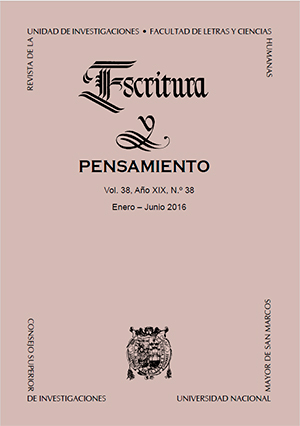PHITONYMY FROM THE JUNGLE OF PUNO
DOI:
https://doi.org/10.15381/escrypensam.v19i38.13706Keywords:
Aimara, phitonymy, isoglosses, Tambopata, toponymy, dialectal variation, zoonymy.Abstract
In this paper we report about 450 names of places, plants, animals, diseases and objects in aimara collected in the basin of Tambopata River comprising three districts in its route: Yanahuaya, San Juan del Oro and Putina Punco. linguistically we analyze (from phonological, lexical and semantic viewpoints) variation of the names related to the language spoken in the area. The stated hypothesis has been validated: the abandonment of a language and culture is slow; The goal of studying the dialectalization of Aymara, and its patterns of denotation and connotation has been achieved. This study will be useful for developing linguistic mapping and preparing regional dictionaries. This work will also contribute to the Andean wisdom present in this cultural progress, strengthening interculturality. The theory of dialectal variation, the method of linguistic geography or geolinguistics is applied to establish isoglosses separating the language varieties, with a descriptive-interpretive approach inspired in structural and functional linguistics.Downloads
Published
Issue
Section
License
AUTHORS RETAIN THEIR RIGHTS:
a. The authors retain their trademark and patent rights, and also over any process or procedure described in the article.
b. The authors retain the right to share, copy, distribute, execute and publicly communicate the article published in the Escritura y Pensamiento (for example, place it in an institutional repository or publish as part a book), with acknowledgment of its initial publication by Escritura y Pensamiento.
c. Authors retain the right to make a subsequent publication of their work, to use the article or any part of it (for example: a compilation of their work, lecture notes, thesis, or for a book), provided that they indicate the source of publication (authors of the work, journal, volume, number and date).













